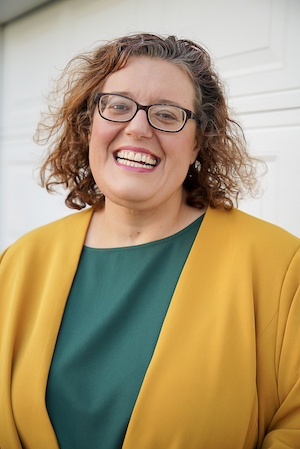

Ertmer (2005) talked about first and second order barriers citing Becker (1999) about first and second order barriers to technology integration. One of those barriers, considered first order, was freedom to innovate the curriculum. XR and emerging technologies require that freedom as curricular integration is a moving target, as new technologies evolve how they will be used to foster student learning will be constantly changing. Megwa (2022) discusses in their literature review the issues related to higher education integration including internet access and cost of devices. Given the low price point of the Oculus Quest 2 - and the fact that tutorials for practical skills can be designed to not use internet, learning modules can be designed to change how practical skills are taught. Finally, this intervention was designed keeping in mind specific barriers to higher education faculty like time, and constant innovation (Polly, et al, 2020). The specific area of faculty barriers discussed in the article were used as a research based framework to design both the intervention and its evaluation.
Participants were 20 faculty and 10 students from a technical university. Faculty work at an institution that has funded the development of five XR modules that are delivered through an Oculus 2 headset. The faculty have been involved in the development of the modules. First by being interviewed to identify the first modules needed and what aspects of the coursework should be addressed. Second, they were consulted on successive layers of development Alpha and Beta toward developing a workable model that could be distributed to students and used in coursework.
Faculty time is important so this professionals development model was designed to optimize faculty time and reduce barriers to integration such as network and support issues. Faculty engaged in a 2 hour workshop divided by module topic. Each faculty member was given approximately 30 minutes in the module, and then an hour and half designing activities and assessments to fit into the curriculum. Faculty also identified students who could help with logistical issues dealing with XR headsets. Faculty were sent home with headsets and homework to finalize their course integrations.
Students met for two hours and were trained in the modules they would be supporting and logistical issues. They were allowed to take a headset home to be more comfortable.
Students and faculty met for a third meeting where students helped the faculty work out the logistics of the assignment by completing it and helped to work out directions and overcome technical barriers for the faculty.
Training sessions were recorded. Faculty and students involved were surveyed as to the effectiveness of the training. Follow up interviews will be conducted to follow up on any interesting results.
Descriptive statistics will be used to analyze the survey results. The Constant comparison method (Dye, 2000) will be used to triangulate survey results with workshop observations and follow up interviews to identify themes and recommendations for professional practice.
This training is on going and will be completed by December. Faculty will be integrating the units in Spring 2023 so all training will be completed. Data will be analyzed in Spring 2023.
XR, especially virtual reality is gaining attention for higher education training and course integration, especially in practical fields. Many times, it is left to the instructor to identify, training and integrate the content into their curriculum. This action research study can provide a road map for efficient faculty training that is focused on curriculum integration not only the technology.
Castro-Guzmán, W. (2021). Challenges of Professional Development for Technology Integration in Higher Education. Cuadernos de Investigación Educativa, 12(2).
Dye, J. F., Schatz, I. M., Rosenberg, B. A., & Coleman, S. T. (2000, January). Constant
comparison method: A kaleidoscope of data [24 paragraphs]. The Qualitative Report [On-line serial],
4(1/2). Available: http://www.nova.edu/ssss/QR/QR3-4/dye.html
Ertmer, P. A. (2005). Teacher pedagogical beliefs: The final frontier in our quest for technology integration?. Educational technology research and development, 53(4), 25-39.
Megwa, C. P. (2022). The Impact of Technology On Teaching and Learning In Higher Institutions: A Literature.
Polly, D., Martin, F., & Guilbaud, T. C. (2021). Examining barriers and desired supports to increase faculty members’ use of digital technologies: perspectives of faculty, staff and administrators. Journal of Computing in Higher Education, 33(1), 135-156.